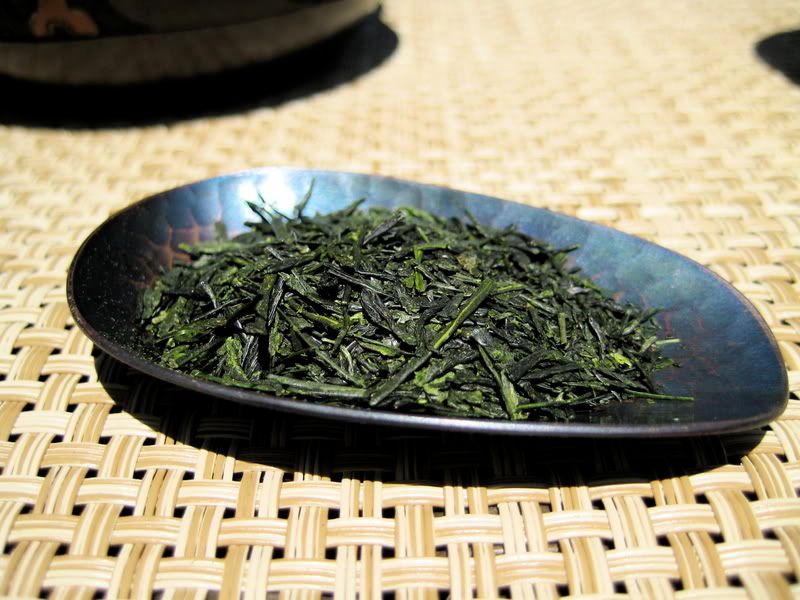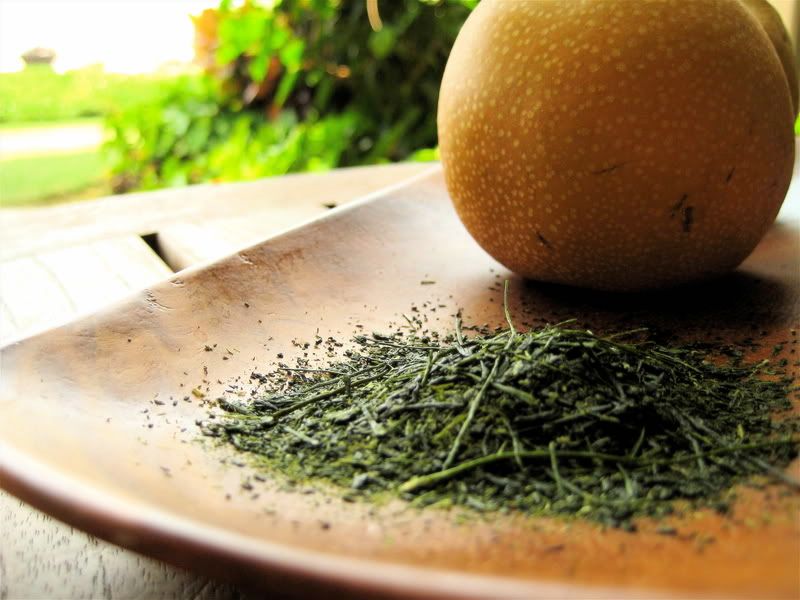Origin: Uji prefecture, Japan
Year: 2008
Vendor: O-Cha (Product page)
Price: $37.95 (110g)
From the O-Cha page:
What a CV! I couldn't resist ordering it this year. It's pricey, but hand-picked teas are a rarity in Japan, so it seemed like it could be worth it.

As you can see, I decided to brew this outside today. Now that I'm back home and not in a dorm, I can actually enjoy being outdoors again. Now I just need to get a portable heat source so I can keep a kettle warm out there! Maybe I'll cobble one together this summer. Anyway, before I get too wrapped up with the possibility of getting new teawares...
 The dry leaf is quite lovely for a sencha. It is dark green, and the leaves are, for the most part, pretty big. This is clearly on the asamushi (light-steamed) side of the spectrum, in contrast with the 2008 Yukata Midori I wrote about the other day. The leaf's aroma is mild, but pleasant; grassy and slightly sweet.
The dry leaf is quite lovely for a sencha. It is dark green, and the leaves are, for the most part, pretty big. This is clearly on the asamushi (light-steamed) side of the spectrum, in contrast with the 2008 Yukata Midori I wrote about the other day. The leaf's aroma is mild, but pleasant; grassy and slightly sweet. The tea brews to a yellow-green color (the yellowness seen here is largely due to the direct sunlight), and has much more clarity than more heavily-steamed sencha, as the leaf is generally more intact. Depending on what you want to get from this tea, you may want to brew it with a heavy hand. If brewed with a regular amount of leaf, it yields a mild, sweet cup. With more leaf comes more flavor, but less sweetness, resulting in a fairly grassy cup. This tea doesn't get very astringent or bitter, even with a lot of leaf, so go wild.
The tea brews to a yellow-green color (the yellowness seen here is largely due to the direct sunlight), and has much more clarity than more heavily-steamed sencha, as the leaf is generally more intact. Depending on what you want to get from this tea, you may want to brew it with a heavy hand. If brewed with a regular amount of leaf, it yields a mild, sweet cup. With more leaf comes more flavor, but less sweetness, resulting in a fairly grassy cup. This tea doesn't get very astringent or bitter, even with a lot of leaf, so go wild.
If you like grassy and mild, this is for you. Personally I prefer the Yukata Midori, as it is sweeter and a bit bolder, but I can definitely see that this is a very high quality tea. Is it worth the price? Well... maybe. If you love teas like O-Cha's Hatsumi, Fukamushi (supreme or regular), or Yukata Midori, or Den's Fukamushi or Maki, I would probably spend your money on something else. If you like guricha/tamaryokucha or Chinese greens though, this might be worth a taste.

Expect more outdoors-themed reviews/photos in the future. :)







